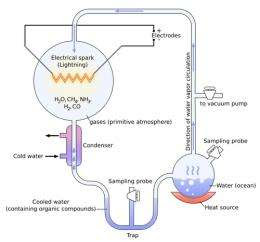Hycean Planets: The Key to Colonizing Life in Space?
A recent discovery made by a research group at Cambridge University's Institute of Astronomy shows Hycean planets, a new class of "hot planets" could have potential for supporting life.

Researchers claim that there is evidence that shows that these Hycean planets have strong potential for the ability to support life, but what exactly IS a Hycean planet? Hycean planets are generally larger than the Earth, on average being 2.6 times the size of the Earth in diameter. Hycean planets are also hotter than the Earth and can reach up to 200° C. The word Hycean is not an actual word, but a combination of "Hydrogen" and "Ocean" created by researchers to emphasize the two most important characteristics of these planets: Their Hydrogen-rich atmospheres and their large liquid oceans. The Hydrogen-rich atmosphere is significant to the potential of life on Earth because the early atmosphere of Earth was theorized to have been Hydrogen rich as well. According to the Miller-Urey Experiment of 1953, the early atmosphere of Earth was most likely composed of high amounts of Hydrogen and low amounts of Oxygen. The early atmosphere of Earth being filled with various compounds, having an oceanic environment and lightening to stimulate reactions helped to produce amino acids, the building blocks of life. The Hydrogen-rich atmosphere of these planets suggests the possibility for creating life on these Hycean planets does exist. Having planet wide oceans is also helpful in the potential for life
as seen in the effects of the oceanic environment for the Miller-Urey experiment. Another similarity between these Hycean planets and Earth is the existence of massive solid surfaces and coastlines. The most promising discovery that would confirm the potential for life on these Hycean planets according to astronomers would be solid evidence of biosignatures. Biosignatures are "chemical fingerprints of biological processes in the planets' atmospheres" (Anderson, 2021). The main biosignatures to look for are ozone, oxygen, methane and nitrous oxide. Dimethyl sulphide and methyl chloride are to be expected as well due to the high Hydrogen concentration in the atmosphere of these planets. Researchers believe that due to the planets' larger sizes, higher temperatures and Hydrogen-rich atmospheres, finding biosignatures should be relatively easy. This is Hycean planet K2-18b, the primary candidate among Hycean planets for supporting life. This planet, between 35-150 lightyears away is for now the best representative for hosting life among the Hycean planets. As of now, the potential for human life there is small. The hotter temperatures lead to this as well as only half of the planet being habitable on its permanent night side. However, supporting microbial life seems possible, as researchers compare it to the extreme environments of our oceans.
So COULD this planet, or any of its fellow Hycean planets serve as a replacement for Earth? Probably not, unless we can get our hands on some highly advanced technology to make 400° F feel like 80° F. It would be a lot easier, and a lot cheaper, to work on making our planet a better place. After all, there's no place like home.
Author: Anas Mahmoud
References
Hycean planets might be habitable ocean worlds. EarthSky. (2021, August 29). Retrieved September 21, 2021, from https://earthsky.org/space/hycean-planets-exoplanets-habitability/.
Scientists propose new hypothesis on the origin of life. Phys.org. (n.d.). Retrieved September 21, 2021, from https://phys.org/news/2009-09-scientists-hypothesis-life.html.
Strickland, A. (2021, August 26). This new class of hot ocean worlds could support life. CNN. Retrieved September 21, 2021, from https://www.cnn.com/2021/08/26/world/hycean-planets-habitable-scn/index.html.
TheFunsuman. (2013, January 6). Urey Miller Experiment | origin of life. YouTube. Retrieved September 21, 2021, from https://www.youtube.com/watch?v=nK3iVIiaEmE.



I like your title and lede (first paragraph). Very parovocative. Your explanations tend to be a little repetitive. The first sentence of your second paragraph, for example, could be omitted without loss of coherence or meaning. You need a better explanation of the Miller-Urey experiment which showed that electrical discharges in the earth's primitive atmosphere could lead to chemistry producing amino acids and other compounds essential to life. If liquid water is present to dissolve these compounds further chemistry might occur producing more complex compounds. Ultimately M-U postulated life might be produced. The implication here is that other planets with atmospheres similar to the ancient earth atmosphere, rich in hydrogen, might produce life in a similar way. I like your last paragraph and especially your last sentence.
ReplyDelete